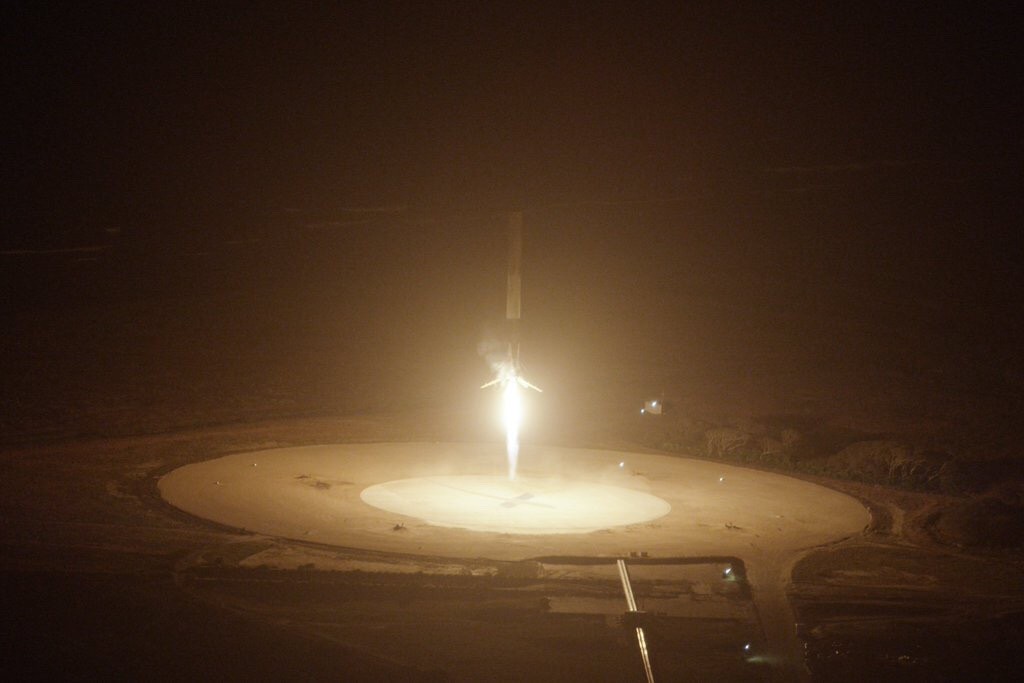Monday evening, the first of SpaceX’s 70 m (or 230 ft) Falcon 9 full thrust launch vehicles successfully deployed 11 satellites to low Earth orbit — and performed reversal, supersonic retrograde, and landing burns to return the first stage to Cape Canaveral. Recent upgrades to the Falcon 9 include densified oxidizer and fuel, with liquid oxygen supercooled to 66.5 K (or −340 °F) and the kerosene fuel RP-1 cooled to 266 K (or 20 °F) to store more energy per unit volume and help increase performance by about 1/3.

The 48-m Falcon 9 first stage lands back at Cape Canaveral after launching the second stage and 11 satellites into Earth orbit, 2015 December 21
Thanks SpaceX for this thrilling achievement and historic first, which may eventually radically lower space transportation costs, and thanks for sharing it with us live as it happened! If you missed the SpaceX broadcast, check out the landing excerpt, currently available on You Tube, for a great natural high.



Cool. Somehow I missed in the news that Falcon 9 successfully launched 11 satellites. The fantastic landing was what stuck with me. Thanks, John!